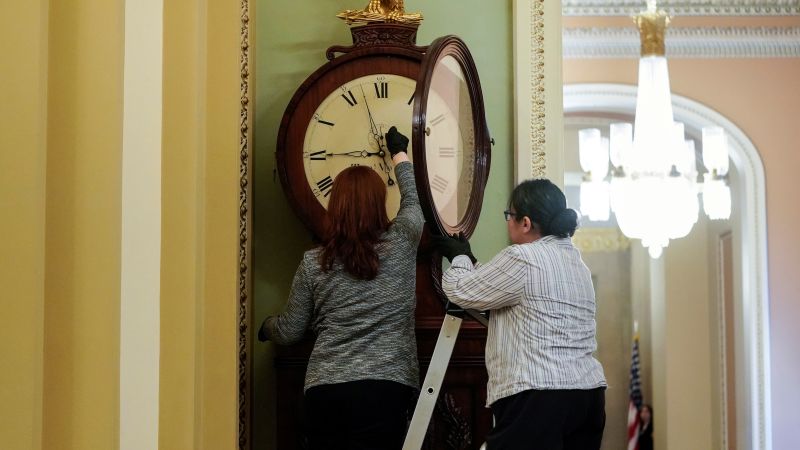The Foundations of Daylight Saving Time: From Benjamin Franklin to the U.S. House of Representatives: A Conversation with Michael Hilberston
Millions of Americans want to quit the time change because of the disruption and confusion it causes. More than a third of U.S. states now back a permanent shift to daylight saving time. Businesses have praised the plan for more than 100 years and it would be a final victory if that happens.
When daylight saving was extended into early November 15 years ago, many saw the U.S. candy industry as a winner, since the extra hour of daylight could drive sales of more Halloween treats.
Michael said that businesses support Daylight Saving Time was much deeper than that.
Daylight saving time was supported in the 1700s by Benjamin Franklin. He “calculated that the city of Paris could save millions of pounds of candlewax every year if residents woke up early in the morning and went to bed early at night,” according to the House of Representatives’ history blog.
They understood a long time ago that when they leave their jobs they are more likely to stop and shop on their way home.
Daylight Saving Time in 2020: How the U.S. Changed its Decay during the First Two Years of the DST Reform
States backing the change range from Florida to Washington. Some states have said they would link a potential switch to decisions on DST by their closest neighbors, hoping to minimize disruptions in regions such as the Midwest and New England.
None of those states can do anything without an act of Congress, and Sen. Marco Rubio has introduced legislation a number of times. His Sunshine Protection Act passed through the Senate, but is still awaiting House approval.
Daylight saving time will take over control of the clock for 34 weeks, starting in 2020 and ending in 1992, with “standard time” in effect for a small portion of the year. The original law divided the year in half.
Those changes all followed the establishment of daylight saving time in 1966, when Congress passed the very sci fi-sounding Uniform Time Act. Until then, the U.S. had mainly dabbled with daylight saving during World War I and World War II.
Critics say there’s a flaw in the idea that America will save energy if people don’t use their lights as much: We now have many more ways to consume energy, including running air conditioners and TV sets at home. We also consume more gas while we drive around to enjoy that bonus hour, according to Downing.
Daylight Saving Time in the UK, France and Germany – a letter from Benjamin Franklin to the editor of the French newspaper ‘The Brief Life of Benjamin Franklin’
And yet, all these months later – and with the clocks set to be turned back – the Democratic-led House has not picked up the measure. And it seems unlikely to do so in the lame-duck session that will follow the next week’s midterm elections.
Daylight Saving Time is observed by the US as well as other countries. Seventy other countries around the world do too. But in Britain, France and Germany, the change is on a different schedule: clocks spring forward on the last Sunday in March, and fall back on the last Sunday in October.)
The origins of the idea are up for debate. But in a 1784 letter to the editor of the Journal of Paris, Benjamin Franklin suggested that Parisians could save money by getting up earlier during the summer because they would then have to light fewer candles in the evening.
